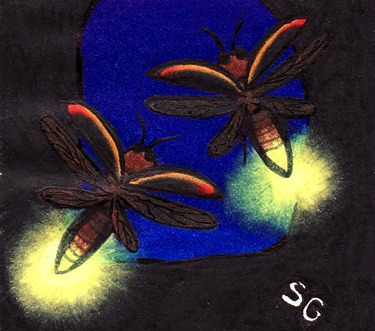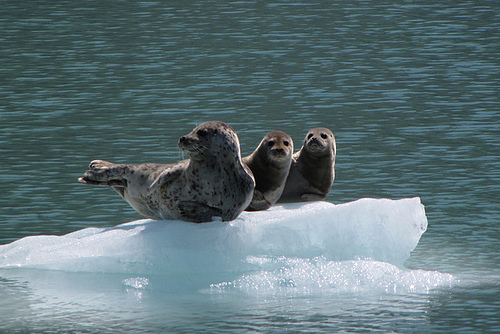Our national parks have been called “America’s best idea,” and Americans are proud of the special places we have protected for the inspiration and enjoyment of current and future generations. But protected areas from Florida to Alaska face new challenges on a warming planet, and melting sea ice means that a newly vulnerable area — the Arctic — is increasingly threatened by offshore oil drilling and industrial fishing. Protecting the Arctic is emerging as one of the great environmental challenges of our age — so what lessons can we learn from earlier generations who came together and won protection for the parks, sanctuaries, and wildlife refuges that we enjoy today?
As we were making final preparations for our Save the Arctic tour in Alaska, some of the crew from the Greenpeace ship Esperanza had a chance to visit Kenai Fjords National Park, a wild and protected area in southern Alaska where the coastline is punctuated by extraordinary glaciers that empty into a sea dominated by humpback whales, seabirds, orcas, and seals.
The effects of climate change are impossible to ignore here, as these enormous glaciers melt and retreat back to the coast. Researchers here in 1909 observed and photographed Northwestern Glacier extending 10 miles into the sea. A century later, we find this glacier has retreated back so far that today it barely reaches the sea. Alaska has warmed twice as quickly as the rest of the United States, and this melting has accelerated in recent years.

Northwestern Glacier’s retreat has accelerated, and now it barely reaches the sea.
While the impacts of climate change are particularly dramatic here in Alaska, there’s trouble for national parks and other protected areas across the United States. In many Western parks like Rocky Mountain National Park, pine forests are being decimated by the mountain pine beetle that thrives in warmer winters. In Florida, coral reefs in Biscayne Bay and the Dry Tortugas are being destroyed by warming and acidifying oceans, while sea level rise threatens low-lying areas like the Everglades. Glacier National Park may not have any glaciers left at all by 2030. The list goes on — for more, see the National Parks Conservation Association’s report, “Unnatural Disaster: Global Warming and Our National Parks.”
Here at Kenai Fjords, tidewater glaciers play an important role in the ecosystem, and the accelerated retreat of these giant rivers of ice will have impacts beyond the melting ice. Just like other rivers, the areas where these glaciers meet the sea are extremely productive estuaries where freshwater and saltwater meet, and nutrients mix. As these frozen rivers retreat and in some cases no longer reach the sea, researchers are studying the impacts to the marine ecosystem and the wildlife that depend upon it.

A harbor seal and her pups on ice broken off of Northwestern Glacier, Kenai Fjords.
The far-reaching impacts of climate change challenge our very notions of protecting unique places, and the director of the National Park Service has said that “climate change is fundamentally the greatest threat to the integrity of our national parks that we have ever experienced.” At the same time, protected areas like national parks and wildlife refuges offer some of the best opportunities for scientists studying how climate change is impacting plants, animals, and ecosystems — and what the future may hold. And of course, the habitats protected by parks, wildlife refuges, and reserves are more important than ever for species struggling to survive in a changing climate.
Our expedition is headed now toward the Arctic, one of the last untouched and pristine places on our planet — and one uniquely threatened by climate change. It’s a place where melting sea ice doesn’t just impact habitats, it is the habitat for animals like polar bears and walruses. The quickly melting Arctic presents extraordinary challenges for the people and animals who call it home, and today it is also important for scientists studying what climate change means for all life in Earth. Like the special places we take pride in protecting for future generations, the Arctic needs protection from industrial exploitation.
Oil companies like Shell see the melting ice as an invitation to drill for oil, and there’s little doubt that industry would have destroyed places like Yosemite and the Grand Canyon as soon as it could if earlier generations hadn’t fought to protect those special places. This fight to save the Arctic will be different in some ways — the high Arctic region around the North Pole doesn’t belong to any nation, so the movement to protect the Arctic must be global. But like those earlier efforts, we’ll need the power of people to challenge some of the biggest corporations in the world.



